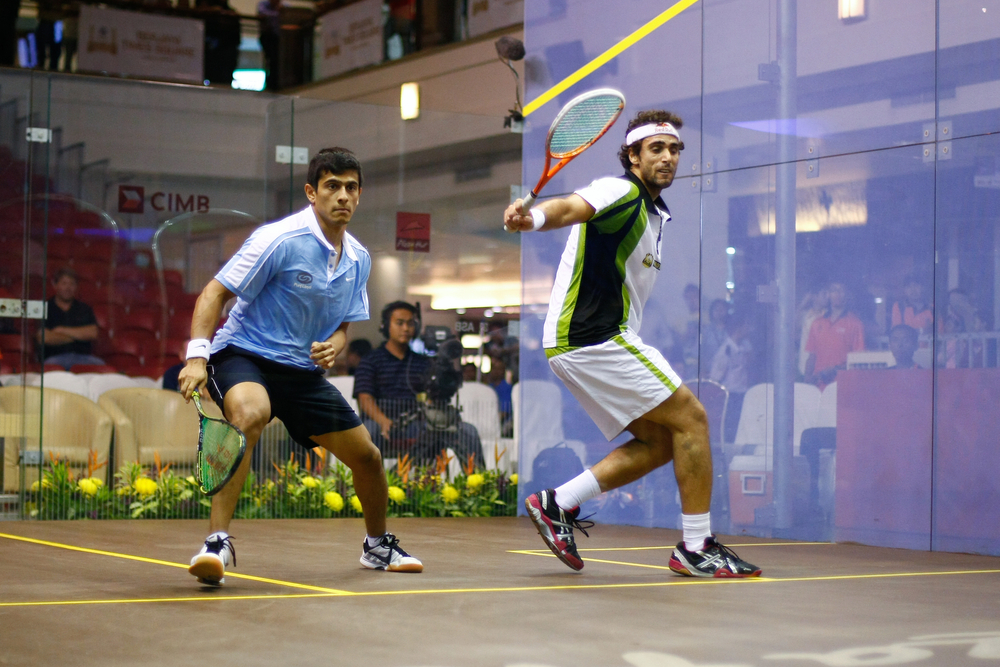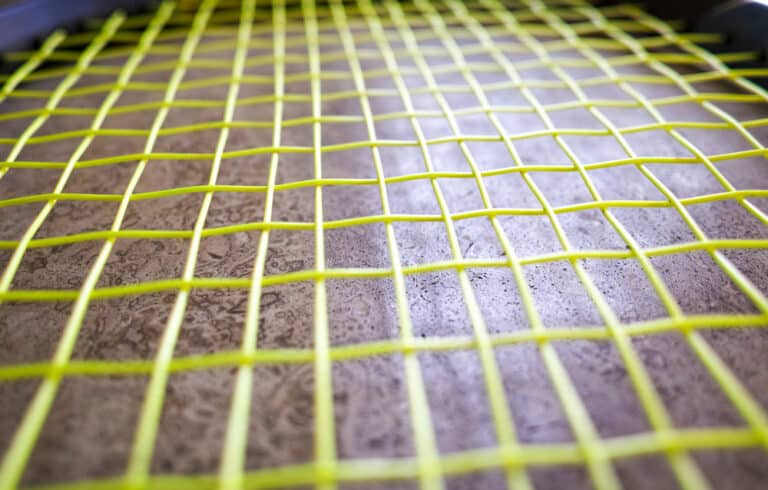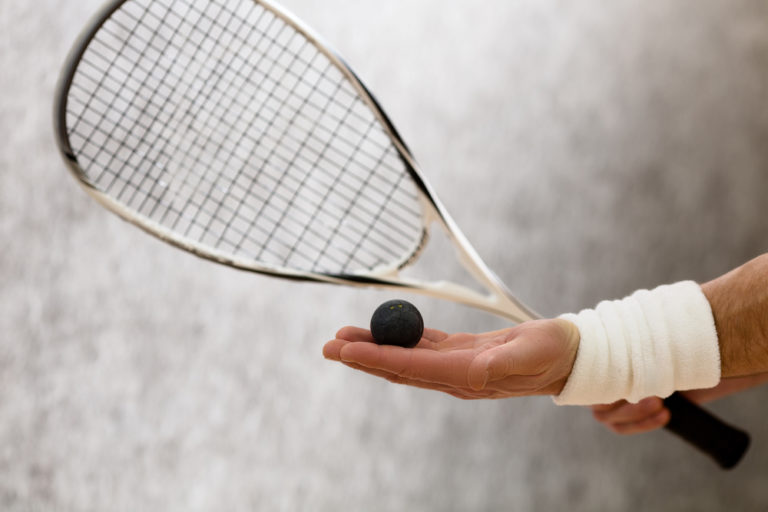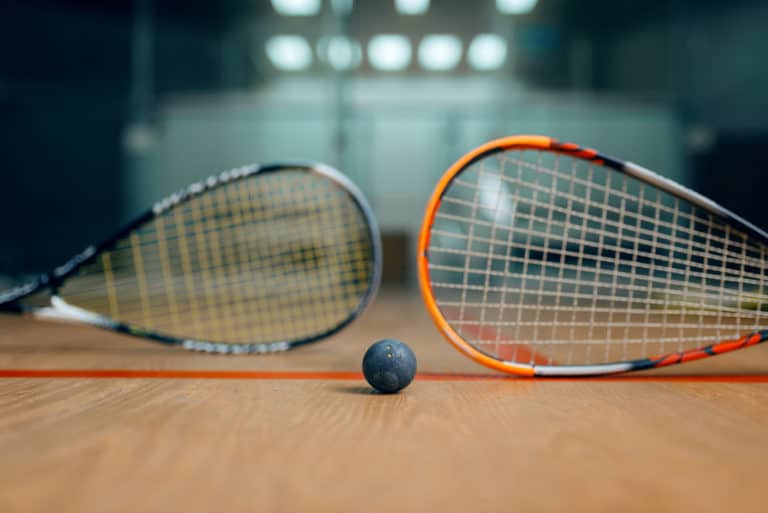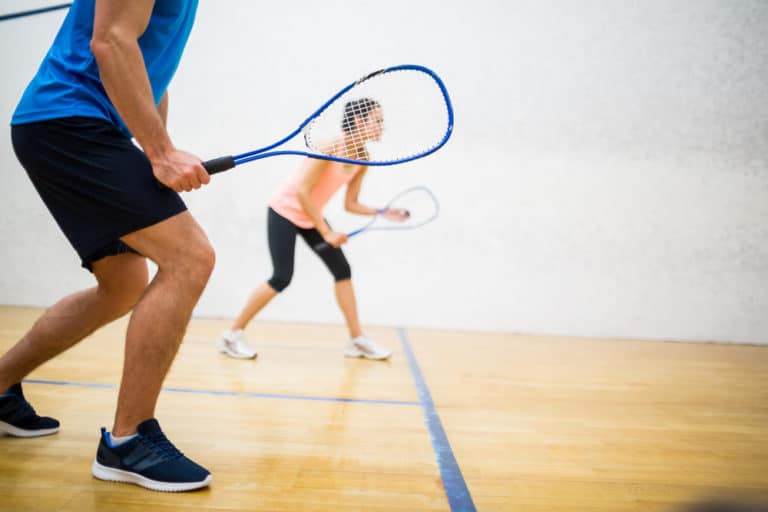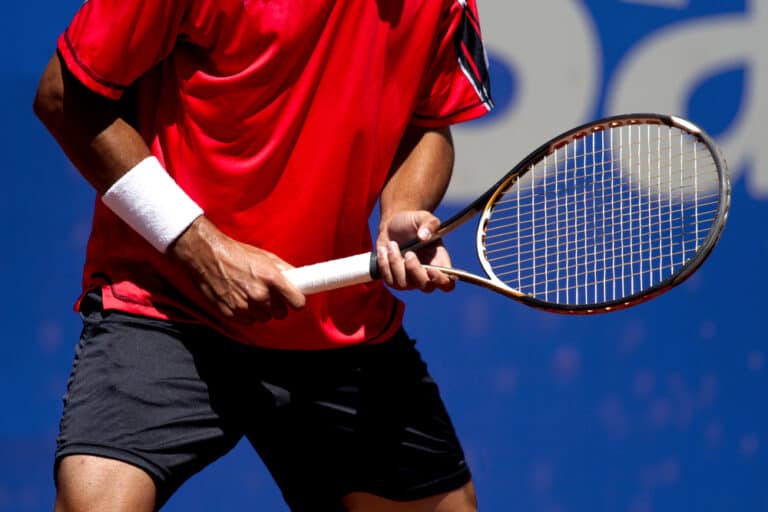Where Did The Game Of Squash Originate?
Ball games have been favorite pastimes for millennia. Greeks, Egyptians, Romans, Native Americans, and even Mayans played ball games back in the day. Our current civilization is still as crazy about ball sports. Squash is a fast-paced, skilled ball game popular worldwide, with World Squash Championships organized by the Professional Squash Association. So, where did this game originate?
The game of squash originates in 19th-century England, where it evolved from tennis and similar games with different names, like “racquets,” “fives,” or “baby racquets.” Squash has its original roots in 12th-century France, though, when children played “the game of the palm” in the streets.
Squash has a colorful history, from a street game played by children to prisoners whacking a ball against a couple of walls. Boys from Harrow school in England combined two other ball games to create the new sport of squash in the mid to late 1800s. These games became popular with adults and children alike.
Where Did Squash Originate
It’s a long story, but let’s start at the beginning, a thousand years ago.
The Game Of The Palm
Jeu de paume (game of the palm) got its name from the 12th-century French children that hit balls with their hands along the roofs or awnings of the houses and shops in the narrow village streets. They made homemade balls from a patch of fabric or leather filled with sand, sawdust, moss, or dog hair.
As time progressed, the games became more organized. Monks played in monastery courtyards. Slowly people started using sticks and branches to hit the balls. Late in the 15th century, the Dutch invented the racquet. People began playing on enclosed courts, specially built to play these games. By 1600, there were at least 250 courts in Paris.
Squash Also Has Roots In Tennis
Many European countries began to take up the sport. It was very popular with the Tudors, and the British named the sport tennis. Henry VIII installed courts at all his palaces. People played real tennis indoors on specially designed courts, and lawn tennis only evolved in 1873 as an outdoor version of the game. You may wonder what tennis has to do with squash, so let’s backtrack a little.
The Game Of Racquets Was An Early Ancestor Of Squash
In the early 1700s, prisoners at one of London’s debtor’s jails known as the Fleet invented a simple version of real tennis. They called it racquets, and all it involved was whacking a ball against a wall. They made the ball from wound cloth, which was more or less the same size as a golf ball. The prisoners used a stretched tennis bat as a racquet. Racquets quickly gained popularity in Britain.
Soon the British started building roofless racquets courts all over the country, usually just one or two stone walls with a paved floor. British weather can be iffy, so they started building covered courts. The Royal Artillery constructed the first covered racquets court in 1830. From this time onwards, racquets spread worldwide.
Fives And Squash
The game called fives was another English ball-and-wall game that school boys played at public schools. The game got its name because of the five fingers on the hand. It was very similar to racquets, but players used their hands instead. Schools would name their versions of the game after their school, e.g., Eaton fives, Winchester fives, etc.
Rugby School played their version of the game (Rugby fives), built courts 28 feet by 18 feet, with sloping side walls, and a front wall with a 2.5 foot tin on it. It looked very much like today’s squash courts.
Harrow School And Squash
Harrow School was a prestigious public school near London and the official birthplace of the squash game. It was here, in the mid-19th century, that racquets and fives combined, morphing into our present-day squash game.
Harrow boys could not get enough of the racquets game and played in the yard outside the main building, courtyards, and alleys with all kinds of hazards. Soon factories began to produce rubber balls, which the Harrow boys favored over the old, hard balls.
With the advent of the new ball, players called the game “softer racquets” or “baby racquets.” Harrow built a new set of racquets and fives courts in 1865, which the boys primarily used for their favorite baby racquets game.
How Squash Got Its Name
Some people believe the game got its name because of the noise the ball made as it barreled into the stone walls. But it is more likely that they named it after a strange and violent Harrow custom.
Once a year, the Harrow boys would vote for the “cricket keeper” whose job was ordering sports equipment and arranging matches. Although it supposedly encouraged democracy, the voting turned out to be an excuse for beating up unpopular boys or those from opposing houses or teams.
Voters had to declare their chosen candidate. This was the cue for the boys from opposing houses to beat up the voter. These beatings could last up to an hour. The boys called the annual elections “squash.” It seems the game that the Harrow boys created got its name from the yearly organized violence!
The Spread Of Squash
In the beginning, squash was a Harrow sport, but it was so popular that when the students went home, they took racquets and balls with them. When they graduated, they built squash courts in their homes. The two Gibney brothers, who graduated from Harrow, made a squash court in a stable loft at their home. And so it spread from there.
Other English schools that boasted fives courts, such as Rugby and Elstree, also began to play squash. It gained more popularity in London, and Lords built a court in 1890, with the Bath Club following a few years later.
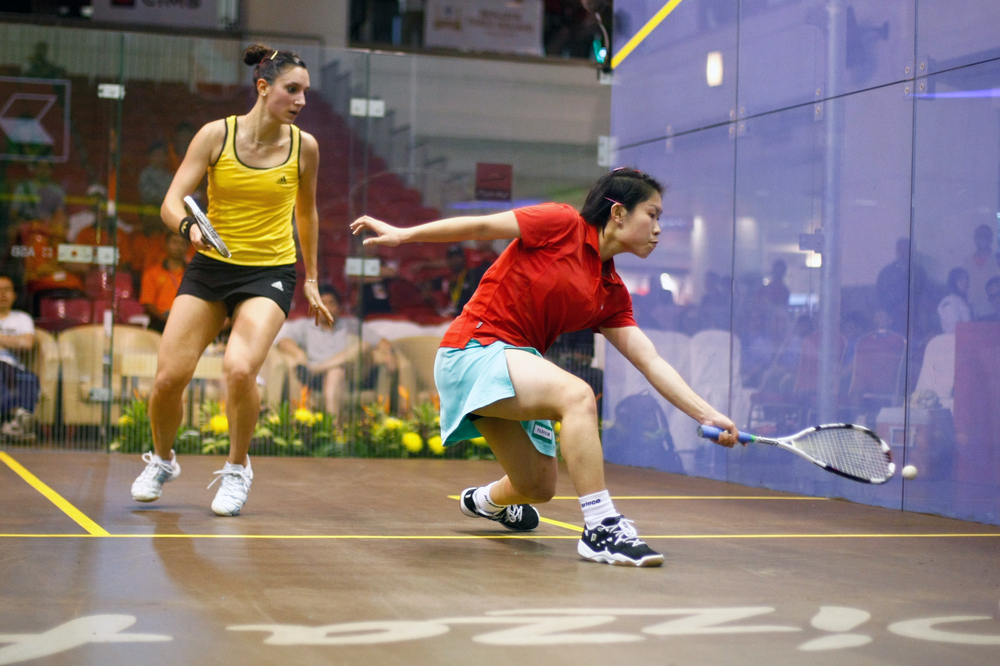
Standardizing Squash
Until the early 1900s, squash in Britain did not have a set of official standards for the rules, court sizes, or equipment. In 1907, the Queen’s Club founded the Tennis, Rackets, and Fives Association. Two years later, they organized a squash sub-committee, which began the work on a preliminary set of rules.
The sub-committee allowed each club to determine its own court size. They found two suitable balls: a thin rubber ball of medium size or a small solid ball. They also preferred stone and cement over wood for the court. And rules should be flexible, they decided.
The sub-committee could never enforce its recommendations. Only in 1923 a group of English club delegates founded the Squash Rackets Representative Committee that began setting standards for British squash. They endorsed the slowest ball in play at that time as the standard one and considered the correct size of a court 32 by 21 feet.
In December 1928, the country formed its Squash Rackets Association to control the game in Britain.
Squash In The USA And Further
Jay Conover built the first squash court in North America in 1884 at a school in New Hampshire, St. Paul’s. Conover attended Columbia University with a Harrow graduate, Hyde Clark. Clark mentioned the adapted racquets game played at Harrow, describing the enjoyable squash game. Conover subsequently built four open-air squash courts at the school.
Squash spread from schools to clubs in America, and soon the Racquet Club of Philadelphia, which used newly-built fives courts for squash, spread the sport to other parts of the city. In 1903 it hosted a six-league competition and later a Pennsylvania state championship.
In 1904 the inter-club league formed the United States Squash Racquets Association (USSRA), which set local court size and scoring standards. But these standards changed, and it ended up with the game taking on two versions; hardball and softball, and they had different-sized courts. This lasted for the next seven decades.
At the turn of the century, squash appeared in countries all over the world. The game flourished from Asia to Africa, Australia to Europe, the Middle East, and everywhere in between. However, there were no universal standards that applied to all countries.
World Squash Federation
In January 1967, seven countries met in London to form the International Squash Rackets Federation. The founding nations were Britain, Australia, India, Egypt, New Zealand, Pakistan, and South Africa.
In 1992 this international organization decided to call itself the World Squash Federation. It controls the rules, coaching, and refereeing standards and regulates the equipment used for the sport. The International Olympics Committee accepts this organization as the squash governing body. WSF has almost 150 member states now.
Squash has not yet made the list for inclusion as an Olympic sport. Still, the WSF continues campaigning for the sport’s participation.
The Difference Between Racquetball And Squash
If you’re not a very sporty person, you may have thought that racquetball and squash are different names for the same game. But there are some significant differences.
Differences In History
Squash is an older sport that English schoolboys invented in the early 19th century. Joseph Sobek invented racquetball in 1949 at the YMCA in Greenwich while trying to increase his fitness.
Racquet Differences
Racquetball players use a “racquet,” and squash players use a “racket.” A racquetball racquet measures up to 22 inches long, and its stringed area is tear-drop shaped. A squash racket can be up to 27 inches long but has a narrow stringed area.
Ball Differences
Both sports use hollow rubber balls, but racquetballs are 42% larger and tend to bounce more. Squash balls have different colored dots to show the amount of bounce and the skill level to which it is suited:
- Double Yellow – Extra Super slow
- Yellow – Super slow
- Green or white – slow
- Red – medium
- Blue – Fast
Differences In Court Sizes
A racquetball court measures 40 feet x 20 feet x 40 feet (LxWxH). A squash court measures 32 feet x 21 feet x 18.5 feet (LxWxH).
Differences In Serving Rules
When a squash player serves, he must stay within a specific box, and the ball must go to the opposite corner to be considered a valid serve.
When a racquetball player serves, he can do so from anywhere in the service box. The ball must first fall behind the service box without touching the back wall.
Differences In Winning Requirements
In racquetball, you can only score if you have the serve. Scores go to 15, but a third tie-breaker game will go to 11 points. The winner takes the best of three games.
Squash players can score points at any stage. Scores go to 11, and winners take the best of five games.
World Squash Championships
The Professional Squash Association organizes events for men and women known as the World Squash Championships. The first men’s event happened in London in 1976. The women’s first took place in Brisbane, Australia, in the same year.
Major Squash Tournaments
Today the significant tournaments for professionals are:
- Squash World Open
- World Super Series
- British Open
- Tournament of Champions
- Us Open
- Hong Kong Open
- Qatar Classic
- Windy City Open
- El Gouna International
Squash And Your Health
The same game played by aggressive schoolboys in England gives us excellent cardiovascular exercise. The upper and lower body get tremendous exercise from running around the court and hitting the ball. Every hour of play can burn between 600 and 1000 calories.
However, one study reports that squash is not a healthy choice of sport for older men with heart disease, as it can cause cardiac arrhythmia, which can prove fatal.
Fun Facts About Squash
Take note of some fascinating nuggets of information about the game:
- There are more than 50 000 squash courts worldwide.
- 188 countries possess at least one court.
- England has the most squash courts with 8500.
- There are approximately 20 million players in the world.
Conclusion
While squash is officially only 150 years old, it has evolved over almost a thousand years. The sport has taken a roundabout journey from a 12th-century street game to an internationally recognized sport. It took some detours over the centuries before reaching its current heights. It had roots in real tennis and games like racquets and fives, which were popular in the 18th and 19th centuries.
Squash makes for an excellent workout and has become a popular form of exercise in the last 200 years. We have the Harrow boys to thank for the high-speed court game, even if they were a violent bunch!
References
- https://www.worldsquash.org/a-sport-with-history/
- https://en.wikipedia.org/wiki/Squash_(sport)
- https://www.cs.mcgill.ca/~rwest/wikispeedia/wpcd/wp/s/Squash_%2528sport%2529.htm
- https://websites.mygameday.app/assoc_page.cgi?c=0-3343-0-0-0&sID=32753
- https://en.wikipedia.org/wiki/World_Squash_Championships
- https://olympic.ca/2015/06/30/what-the-difference-is-between-racquetball-and-squash-2/

